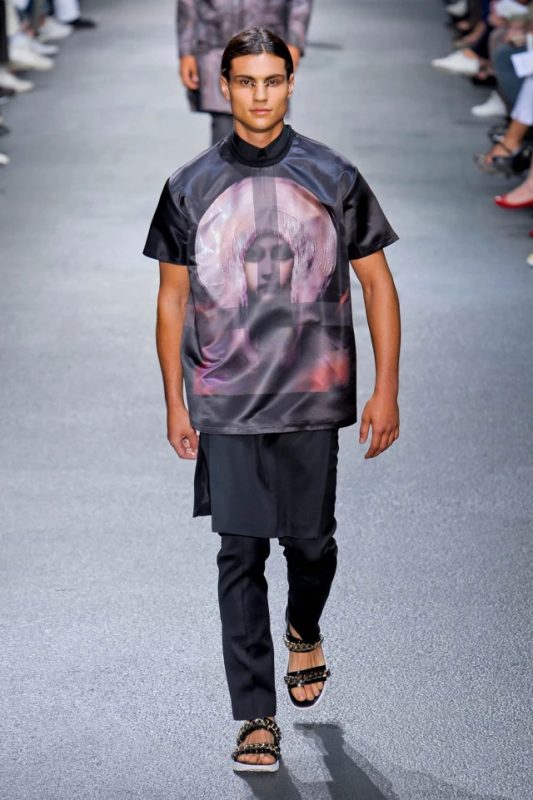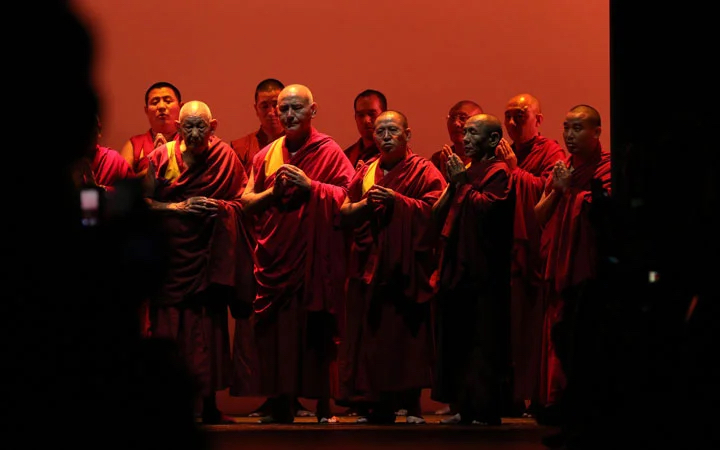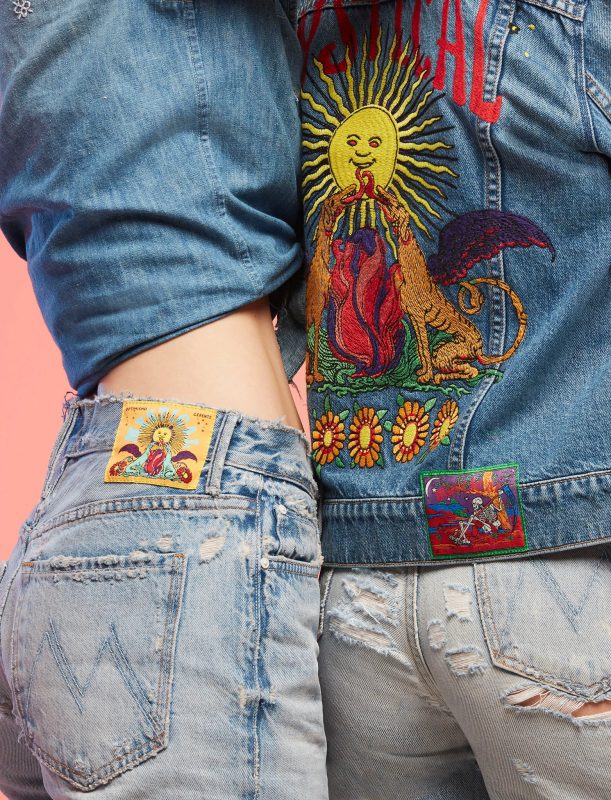From Givenchy to Valentino, Rick Owens to Stella McCartney. The world of fashion and spirituality has always been a contradiction. But in today’s era, the fashion industry frequently explores themes that centre around the philosophy of religion.

Over the past few decades, designers have attempted to integrate a deeper spiritual purpose into their collections. Why is this? Because now, the consumer’s preference is changing. It is turning towards the search for a product full of deep philosophical meaning.
Incorporating Symbols
Over the past decade, many top designers have attempted to incorporate religious or natural symbols into their designs.
As an illustration, Givenchy Men for Spring/Summer 2013 immediately comes to mind. The printed tees and sweatshirts are religious visions, displaying the face of the mother of Christ. Tisci’s fixation on religion isn’t limited to men, either. In the same season, he turned his models into nuns.
Prabal Gurung takes the spiritual route for his Spring/Summer 2016 show, opening with the chant of 30 monks in their traditional robes.

It is becoming increasingly clear that the concept of selling is changing. The basis of aesthetics alone is no longer sufficient to attract consumers’ attention. In today’s era, there is increasing demand for the confluence of philosophy with beauty. The ethos is that your outer form should match your inner nature.
Otherworldly Creations
Guo Pei Haute Couture Spring/Summer 2017. Inspiration strikes when the couturier visits an 18th-century cathedral in St. Gallen, Switzerland. And this is where her “Legend” collection is born. Her 19-look line-up is the result of two years of work, and it’s not hard to see why. The level of beadwork and embroidery (one was spun from the rare gold thread) turns out a parade of divine, if not outright otherworldly, creations.

Valentino Haute Couture Fall/Winter 2017. The starting point for Pierpaolo Piccioli is the religious work of Spanish painter Francisco di Zurbaràn. It results in sweeping priestly robes, capes with hoods, and voluminous silhouettes directly from his paintings. The collection draws its inspiration from the pictures, which reflect each costume – accruing 1,300 hours of work to create. For the finishing touch, animal-shaped bags can be seen in the grip of models, symbolising the seven deadly sins.
Incorporating spirituality into fashion gives people the opportunity to express their thoughts with impunity through the medium of their clothes.
As a matter of fact, we all buy into ideas. Whenever we buy something from the market, for example, we like that thing with which we feel our connection. The integration of spirituality into fashion receives a new dimension and expression. All in all, this proves that fashion is much more than just what people wear.
Different Interpretations

These are different contextual interpretations of the fashion industry. In particular, how clothing penetrates beneath the surface, which is a way of reinterpreting religiosity.
Summing up the fashion of this era is an effort to define clothing. And not just as an item. Fashion is a tool that can reflect a consumer’s personality as well as the soul. This fashion initiative is an attempt to see how deep spiritual messages can connect in the absence of a ritual. This is the demand and need of today’s consumers. And nowadays, the fashion world understands this idea openly, as fact.
Subscribe to FIB’s Weekly Breaking News Report for your weekly dose of music, fashion and pop culture news!







